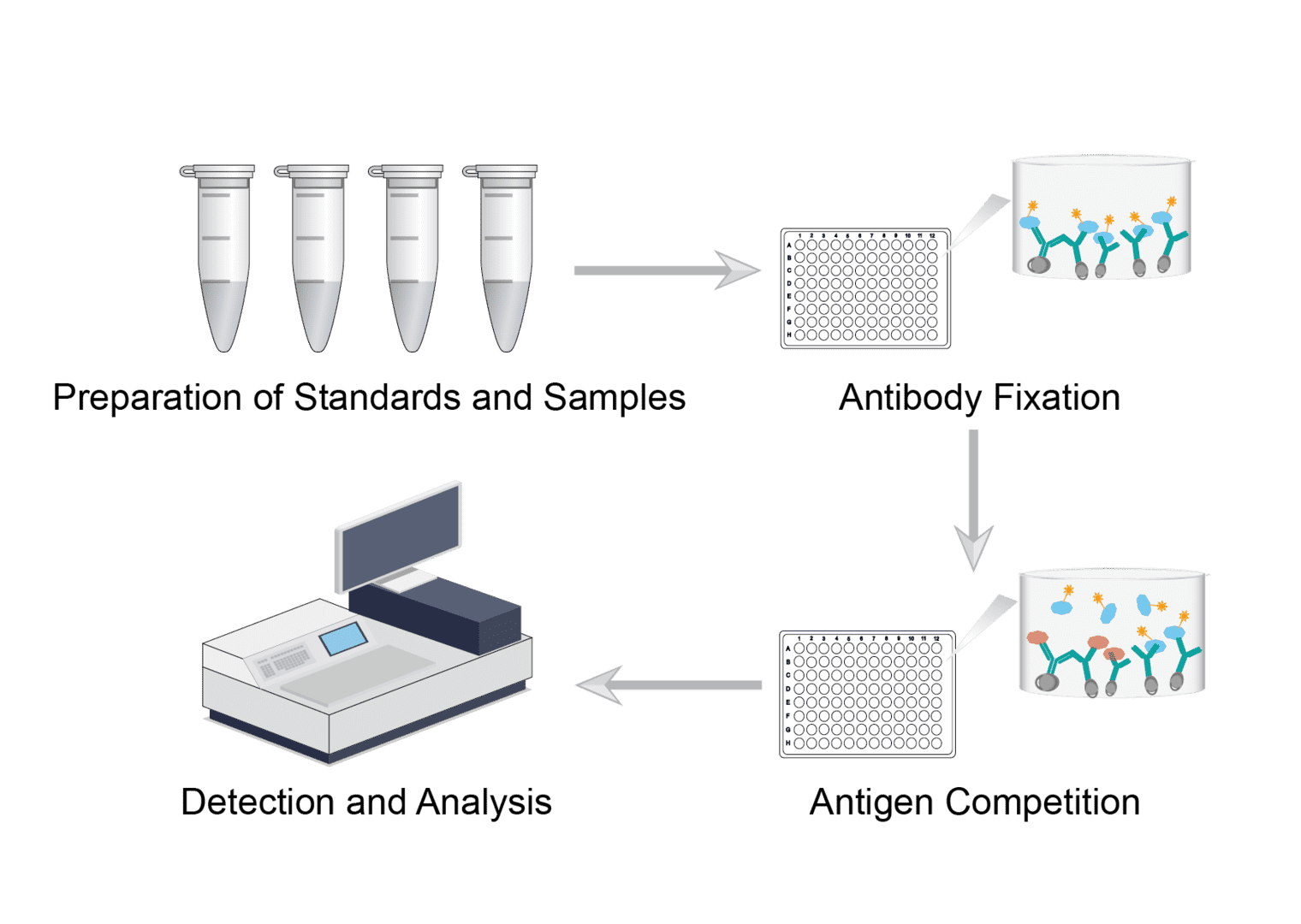Radioimmunoassay Protocol & Troubleshooting
Radioimmunoassay (RIA) is a very sensitive immunoassay used to measure antigen concentrations. RIA has many uses, including drug testing, virus screening, disease diagnosis, etc. Creative Biolabs has extensive experience in RIA. We describe specific protocols for RIA implementation, and our scientists are happy to discuss the details of your project and develop a tailored experimental strategy.
You can see below for general RIA protocols and troubleshooting tips for common problems, please contact us for details.
Solutions and Reagents
| Stages | Solutions and Reagents |
| Preparation | Standards, RIA buffer |
| Immunoassay | Antibodies, radioisotope ligands, dilution buffer, wash buffer |
Radioimmunoassay Procedure
RIA uses antibodies to detect and quantify antigens in samples. As unlabeled antigen from the sample and quantitative radiolabeled antigen reacts with quantitative antibodies, as the amount of unlabeled antigen increases, less and less of the labeled antigen binds to the antibody. Thus, the concentration of free labeled antigen is proportional to the bound unlabeled antigen.

First extract and dilute your sample to be tested. Prepare the sample concentration within the measurement range. Prepare antigen standards using dilution buffer and perform serial dilutions as directed.
Make a known amount of antigen radioactive by labeling it with radioisotopes. Then fix a known concentration and a quantitative amount of the specific antibody in a micro-titration well. Next, add a known amount of labeled antigen to the wells and incubate. Wash carefully after incubation to remove any unbound labeled antigen. At this point, the wells will be most radioactive.
Set up wells for control, sample to be tested, and standard samples. Then add unlabeled antigen to the wells for incubation. The unlabeled antigen will compete with the labeled antigen for binding to the antibody, so there will be free labeled antigen in the wells. Wash carefully again to remove the free labeled antigen.
Measure well radioactivity by gamma counter. As the concentration of unlabeled antigen increases, the radioactivity decreases. A standard curve is obtained by plotting radioactivity versus unlabeled antigen concentration. The sample to be measured is run according to the procedure. The measured radioactivity is calibrated with the standard curve to determine the concentration of the antigen.
Troubleshooting
Abnormal standard curve
- Sample causes. The concentration of the sample may be lower or higher than the detection range of the standard curve. In this case, if you need to measure samples below the value, they need to be concentrated. If you need to measure samples above the value, you will need to dilute them.
- Antibody causes. Check the quality and lot number of the antibody for changes. Variations in ED50 may indicate changes in antibody concentration. We recommend consulting the manufacturer's technical support staff to determine specific information about the antibody. Alternatively, use highly selective antibodies with low cross-reactivity to structurally similar compounds.
- Radioactive ligand causes. Low maximum binding and high NSB may indicate radioligand damage. Check the reagent quality or simply replace the radioligand with a high purity one. Or you can improve the sensitivity of the assay by incubating the antibody and sample first without the tracer.
- Other reagent causes. You must consider whether there is a problem with any reagents used in the assay, such as testing buffers. You can look for contamination, pH changes and other parameters.
- Environmental variable causes. All assays are sensitive to environmental variables such as pH, time, and temperature. You should make sure that the reaction time is consistent in all wells. In addition, the reaction temperature must be carefully maintained. Avoid excessive errors.
- Equipment causes. You should check the quality control records of the equipment used to test performance. In addition, you should recheck the precision and accuracy of pipettes, the counting efficiency of counting instruments, etc.
These are informational resources related to RIA experiments. We hope you will browse and get support on our webpage. Or if you have questions about it, you can contact us to discuss troubleshooting methods.
For research use only. Not intended for any clinical use.
This site is protected by reCAPTCHA and the Google Privacy Policy and Terms of Service apply.



